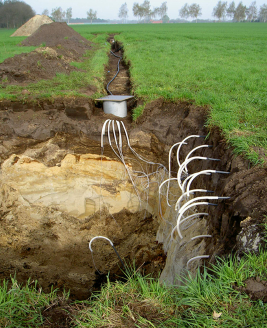Solid waste landfills are a necessity in modern-day society, because the collection and disposal of waste materials into centralized locations helps minimize risks to public health and safety. Landfills generally remain open for decades before undergoing closure and postclosure phases, during which steps are taken to minimize the risk of environmental contamination .


Depending on the landfill waste, the leachate can contain:
1. dissolved organic matter
2. inorganic macro compounds
3. heavy metals
4. xenobiotic organic compounds (hydrocarbons, phenols, pesticides etc).
During the bio-geochemical decomposition initial aerobic processes are replaced by anaerobic activities like rapidly increasing metal leaching and methane gas production at last. Due to the special dynamics of groundwater flow the landfill leachate plumes are relatively small but can reach 1000 m and more depending on the hydrogeological conditions and the natural attenuation. In areas with a high density of landfills or large landfills the aquifer and its use for drinking water is strongly endangered.

Today’s landfills should be constructed with liners and seepage water drains for collecting the leachate. But historically, many landfills were constructed without these techniques. KRIETER WATER & ENVIRONMENT consults in all aspects of landfill restoration:
1. developing landfill impact studies
2. risk assessment mapping
3. groundwater pollution research (detailed hydrochemical mapping of the plume)
4. evaluation of natural attenuation
5. environmental impact assessment (EIA).
KRIETER WATER & ENVIRONMENT develop programs for monitoring, protection and remediation of landfills impacts. The applied methods for the successful remediation of contaminated groundwater are:
1. pump-and-treat-method
2. permeable reactive barriers
3. optimizing natural attenuation
4. restoration landfill seepage water drains, installation of tandem shafts, and more.
